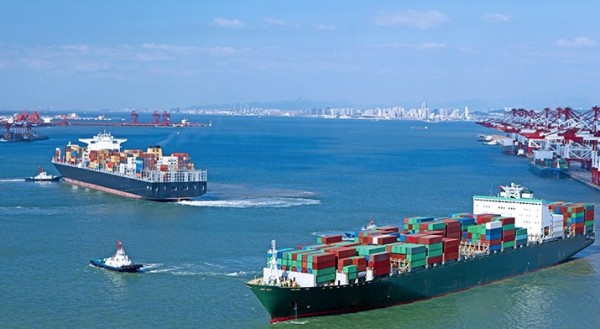The Nordic Association of Marine Insurers (Cefor) issued a report, highlighting some of the technical risk elements of ultra large container vessels, in order to raise awareness and discussion on some of the possible problems associated with them – seen from en insurer’s perspective.
The general consensus seems to be that focus has mainly been on building vessels to create economy of scale and that a number of the concerns raised in this paper have been elided. However, Cefor finds that the development of these huge vessels are calling for concerted efforts from all parties having a stake in the transportation of container by sea. If not properly addressed, world might be facing a situation with a major incident that could have an unprecedented impact on the environment and infrastructure, not to mention damage to society and insurers. The below figure is illustrating the development in size of container vessels during the containerization era:

According to Cefor, the challenges are related to the following:
- Fire incidents : Box-cargoes often contain a wide range of hazardous and toxic substances, and it can take time to identify and locate dangerous cargoes, that are particularly vulnerable to fire. Because of wrong declaration of dangerous goods, crew may end up applying an incorrect strategy for handling a specific fire scenario on board.
- Groundings : In the event of a grounding involving a larger container vessel, equipment to lightering such a vessel can hardly be found. The size of the container vessels overtook years ago the salvage capacity.
- Locations for repair and availability of dry docks : The number of repair yards worldwide, that are able to accommodate the ultra large container vessels in dry dock facilities, are very limited. This is not a concern in the event of scheduled dry-docking, but could pose a problem if one of these vessels experience a damage or general average situation far away from repair facilities.
- Material availability of steel plates > 80 mm : The sheer strake consists of very thick plates. Such plates are normally only produced on demand, and should be a concern to both owners and insurers in the event plating is needed. One thing is the logistics, another if shipyards in many parts of the world have the necessary equipment and welders to repair a hull plate of this size.
- Damage due to bank effects in Canals : It has been seen, during recent years, a number of ultra large container vessels involved in collisions and ground touching while transiting the Suez Canal. When investigating the incidents, it is obvious that they fall within the definition of “Bank Effect”. Often the touching of ground is passing unrecognised by pilots and crew, but with massive damages as a result. An estimated cost to repair is more than USD 2 million. Cefor suggests that there seems to be a need for better training of both navigating officers but also Suez Canal Authority pilots.
Source: Cefor




























































